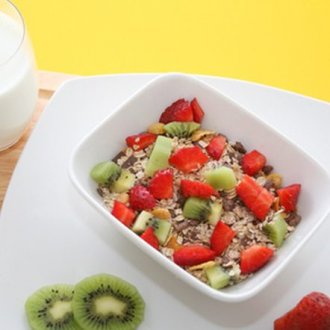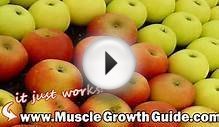
 Nutritious foods can enhance muscle growth and belly fat loss.
Nutritious foods can enhance muscle growth and belly fat loss.
There are literally millions of weight loss products, diet plans and fitness tactics on the market promising rapid results. The best way to reach these goals, however, involves a healthy, balanced diet and regular strength-training and aerobic exercise. Fortunately, belly fat - a common trouble area for overweight individuals - is particularly receptive to to dietary changes and exercise. For best results, seek guidance from a registered dietitian.
Whole Grains
Whole grains, such as brown rice, oats and spelt, are grains that have not been stripped of valuable nutrient content. They also supply plentiful amounts of carbohydrates, your muscles' main fuel source, and fiber, a non-digestible carbohydrate that promotes appetite control. Eating filling foods can ease the process of reducing your caloric intake, which is an important tool for shedding belly fat. For best results, replace refined grain products, like enriched breads, low-fiber cereals, instant rice and egg noodles, with 100 percent whole-grain equivalents. When purchasing breads, cereals and pastas, make sure whole grains are listed as the main ingredient.
Fruits and Vegetables
Fruits and vegetables provide carbohydrates and rich amounts of vitamins, minerals and antioxidants. Many are also high in fiber, including berries, sweet potatoes, kale and broccoli. The American Dietetic Association recommends that men aspiring to build muscle and control body weight consume a calorie-controlled diet that emphasizes fruits and vegetables. Because fresh fruits and vegetables are rich in water and fiber, they contain fewer calories per serving compared to denser foods, like pretzels, candy and ice cream. In other words, eating more fruits and vegetables allows you to fill up on fewer calories, easing the process of belly fat loss.
Lean, Protein-Rich Foods
Protein provides amino acids - the building blocks of muscle. While the belief that more protein is better for increasing muscle isn't necessarily true, according to the ADA, your protein needs do increase to about 15 to 20 percent of your total daily calories when you are strength training. To avoid the health risks associated with saturated fat, such as abdominal obesity, heart disease and high cholesterol, choose primarily lean sources. Foods rich in protein, yet low in saturated fat, include beans, lentils, egg whites, low-fat dairy products, extra-lean meats and fish. For heightened benefits, opt for low-fat cooking methods, like broiling, steaming and grilling.
Healthy Fat Sources
Fat supplies your muscles with energy during exercise. While people's specific needs vary, the ADA recommends that about 20 to 35 percent of your calories derive from fat. The healthiest fat sources are unsaturated, and include canola oil, extra-virgin olive oil, nuts, seeds, avocados and oily fish such as halibut, salmon and sardines. Limit unhealthy fat sources, such as margarine and other foods containing hydrogenated oils, which tend to promote belly fat. Because fat contains twice as many calories as protein and carbohydrates, keep your portion sizes modest.
INTERESTING VIDEO












